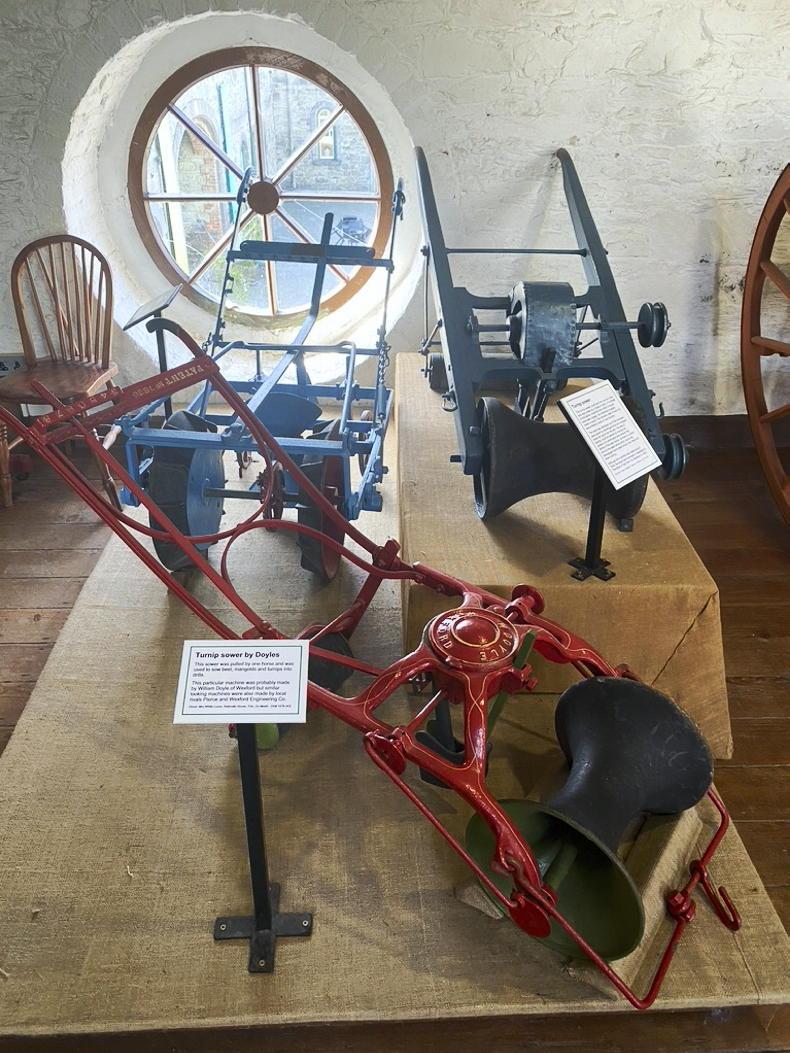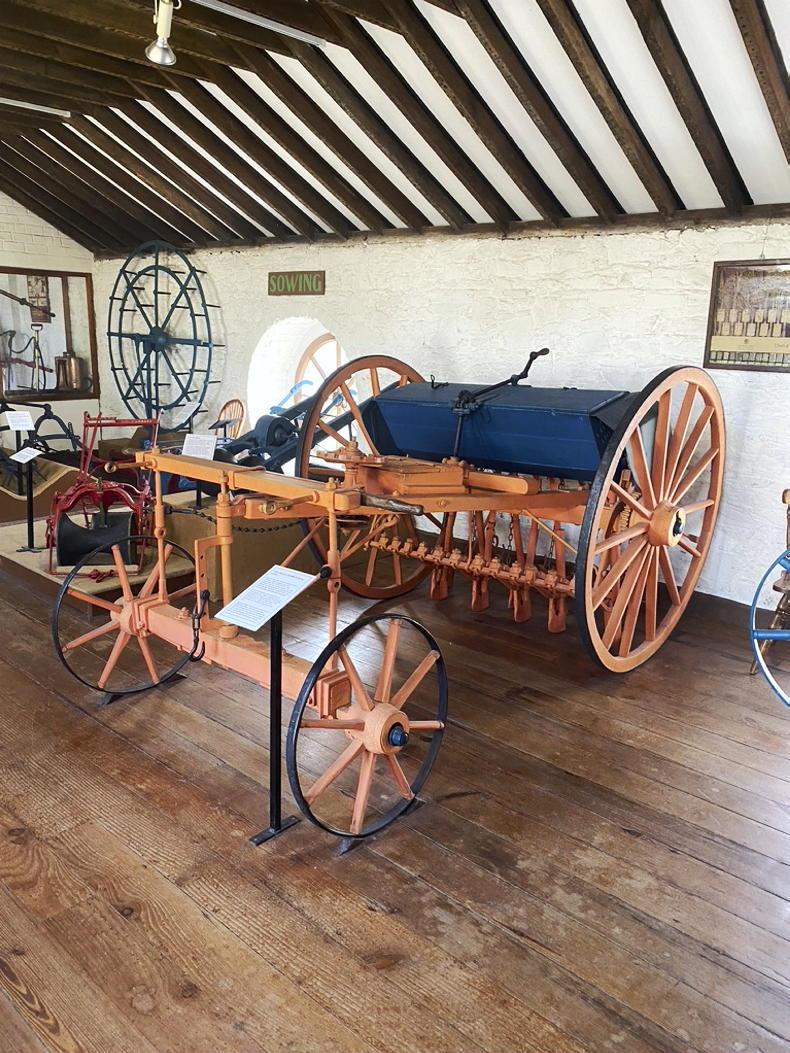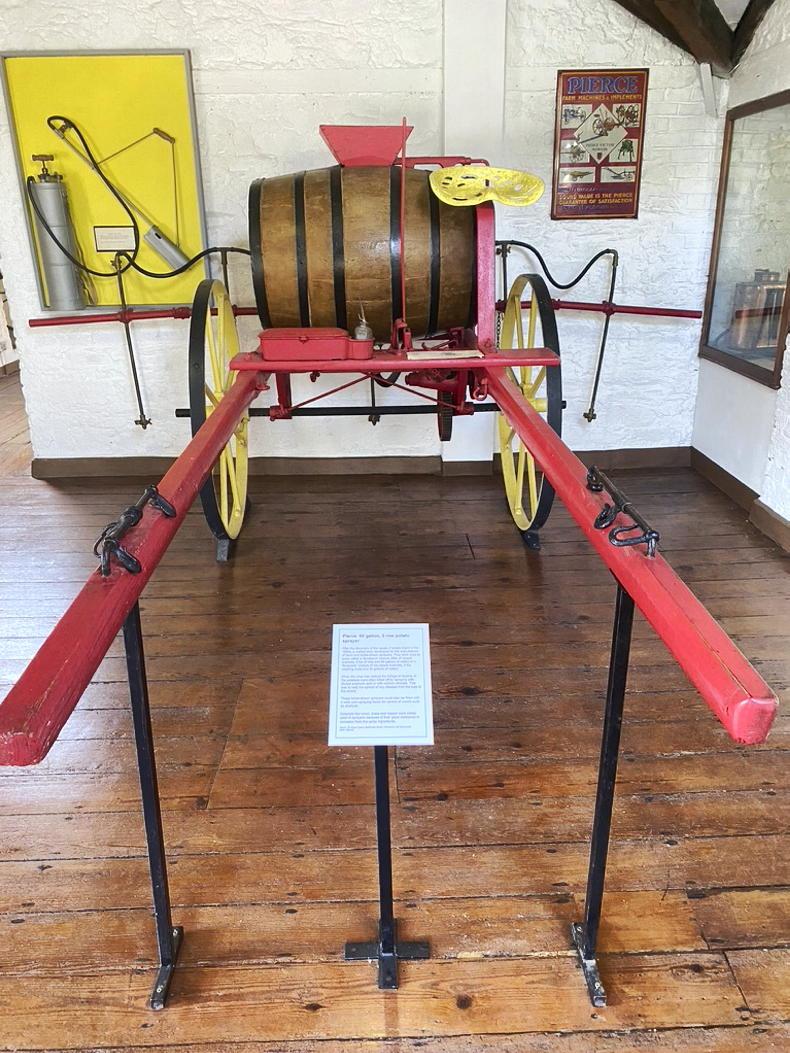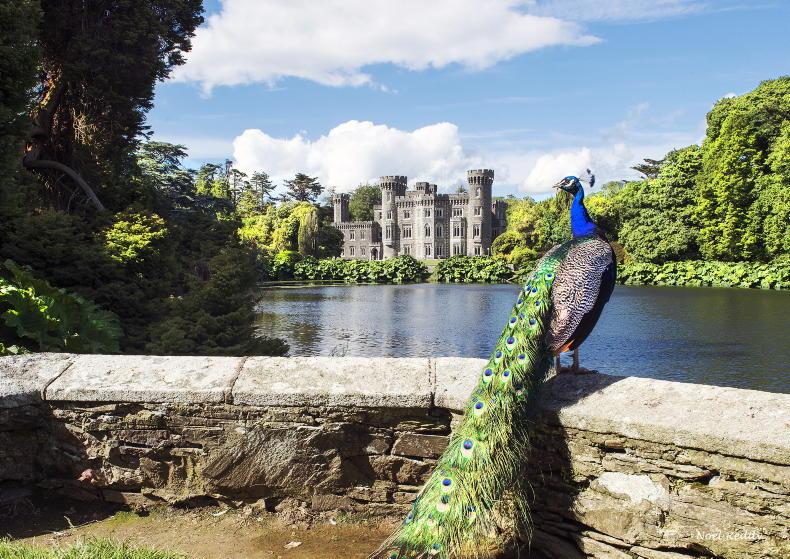When a lot of people recall the Great Irish Famine, they will often think of coffin ships, Ellis Island, people looking for new life in America, soup kitchens and Annie Moore.
Many would forget the fact that it all stemmed from the potato blight, which decimated farms across the length and breadth of Ireland.
However, stepping into the Great Irish Famine Exhibition at the Irish Agricultural Museum at Johnstown, you won’t be long brushing up on your knowledge of it.
The Great Irish
Famine Exhibition
While the blight of the Great Irish Famine didn’t hit Wexford as hard as other areas of the country, it is very well documented at Johnstown Castle. The exhibition takes visitors on a journey from before the agricultural disaster, to life during the famine, right through to the cure and life after.
Walls are adorned with information posters; some detailing on how it all started; the potato varieties that were being grown at the time; and the construction of “Lazy Beds”.
Posters also feature significant researchers including Dr David Moore (Botanic Gardens, first discovered the blight was a fungus that attacked the leaves of the potato plant); Anton de Bary (Germany, first established the life cycle of the blight and named the fungus Phytophtora); and Pierre Miilardet (Bordeaux University, stumbled across the cure for the potato blight by treating the plant with copper sulphate and hydrated lime).
In the centre of the exhibition floor is a replica of a house owned by the poor during the time of the famine. While on the final wall are information posters about the potato in Ireland today (how many farmers grow potatoes in Ireland nowadays, the popular varieties and the most popular potato-growing counties etc). There are also recipes available to create the perfect boxty and colcannon as well as activity sheets for children to test their knowledge on the event.
Soil Preparation and Crop
Sowing Exhibition
This exhibition is certain to impress tillage farmers, but will be of interest to the ordinary Joe-soap too.

Beet and turnip sower.
A lot of focus at the beginning is on ploughing – the first type of plough to be used in Ireland was the “ard” which had a working point made of fire-hardened wood that ripped up the ground as it was pushed. Ploughs eventually became heavy and a team of horses (or oxen) was needed to help farmers to push it along. In the 17th century “mouldboards” (curved plates) were added to the equipment to help turn the furrows.

Turnip sower.
It wasn’t until the following century that steel was used in the manufacturing of ploughs, it was John Deere in the US that introduced the first steel plough in 1837. It was the 1960s before the multi-furrow reversible ploughs were developed.
Corn drill by Garrett & Sons from c1870

Corn drill.
This corn drill was built to be operated by two men and two horses – one man was to steer and guide the horses while the other checked for blockage by grain sprout and lifted the coulter as needed. It has a spoon-feed mechanism for metering corn and different seeding rates could be achieved by adjusting the gearing. This particular model was used by the Furney family in Ballylinan in Co Laois.
Pierce 60-gallon, five-row potato sprayer

Pierce sprayer.
After the discovery of the cure for potato blight, sprayers became popular. The main mixes used were Bordeaux or Burgundy. These types of sprayers were also used to control weeds. This model was donated by Sir Hugh Nugent of Ballinlough Castle, Co Westmeath.
One-horse, one-wheel mowing machine with corn trapping gear

One-horse one-wheel mowing machine.
This model dates back to circa 1880. It is one of the first and simplest models produced by Pierces. This was donated by Richard Whitty of Horetown, Co Wexford.
Read more
A step back in agri time at Johnstown Castle
More than meets the eye at Johnstown Castle
When a lot of people recall the Great Irish Famine, they will often think of coffin ships, Ellis Island, people looking for new life in America, soup kitchens and Annie Moore.
Many would forget the fact that it all stemmed from the potato blight, which decimated farms across the length and breadth of Ireland.
However, stepping into the Great Irish Famine Exhibition at the Irish Agricultural Museum at Johnstown, you won’t be long brushing up on your knowledge of it.
The Great Irish
Famine Exhibition
While the blight of the Great Irish Famine didn’t hit Wexford as hard as other areas of the country, it is very well documented at Johnstown Castle. The exhibition takes visitors on a journey from before the agricultural disaster, to life during the famine, right through to the cure and life after.
Walls are adorned with information posters; some detailing on how it all started; the potato varieties that were being grown at the time; and the construction of “Lazy Beds”.
Posters also feature significant researchers including Dr David Moore (Botanic Gardens, first discovered the blight was a fungus that attacked the leaves of the potato plant); Anton de Bary (Germany, first established the life cycle of the blight and named the fungus Phytophtora); and Pierre Miilardet (Bordeaux University, stumbled across the cure for the potato blight by treating the plant with copper sulphate and hydrated lime).
In the centre of the exhibition floor is a replica of a house owned by the poor during the time of the famine. While on the final wall are information posters about the potato in Ireland today (how many farmers grow potatoes in Ireland nowadays, the popular varieties and the most popular potato-growing counties etc). There are also recipes available to create the perfect boxty and colcannon as well as activity sheets for children to test their knowledge on the event.
Soil Preparation and Crop
Sowing Exhibition
This exhibition is certain to impress tillage farmers, but will be of interest to the ordinary Joe-soap too.

Beet and turnip sower.
A lot of focus at the beginning is on ploughing – the first type of plough to be used in Ireland was the “ard” which had a working point made of fire-hardened wood that ripped up the ground as it was pushed. Ploughs eventually became heavy and a team of horses (or oxen) was needed to help farmers to push it along. In the 17th century “mouldboards” (curved plates) were added to the equipment to help turn the furrows.

Turnip sower.
It wasn’t until the following century that steel was used in the manufacturing of ploughs, it was John Deere in the US that introduced the first steel plough in 1837. It was the 1960s before the multi-furrow reversible ploughs were developed.
Corn drill by Garrett & Sons from c1870

Corn drill.
This corn drill was built to be operated by two men and two horses – one man was to steer and guide the horses while the other checked for blockage by grain sprout and lifted the coulter as needed. It has a spoon-feed mechanism for metering corn and different seeding rates could be achieved by adjusting the gearing. This particular model was used by the Furney family in Ballylinan in Co Laois.
Pierce 60-gallon, five-row potato sprayer

Pierce sprayer.
After the discovery of the cure for potato blight, sprayers became popular. The main mixes used were Bordeaux or Burgundy. These types of sprayers were also used to control weeds. This model was donated by Sir Hugh Nugent of Ballinlough Castle, Co Westmeath.
One-horse, one-wheel mowing machine with corn trapping gear

One-horse one-wheel mowing machine.
This model dates back to circa 1880. It is one of the first and simplest models produced by Pierces. This was donated by Richard Whitty of Horetown, Co Wexford.
Read more
A step back in agri time at Johnstown Castle
More than meets the eye at Johnstown Castle











 This is a subscriber-only article
This is a subscriber-only article










SHARING OPTIONS: